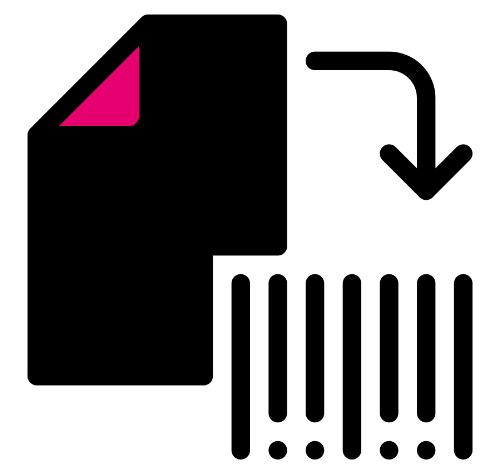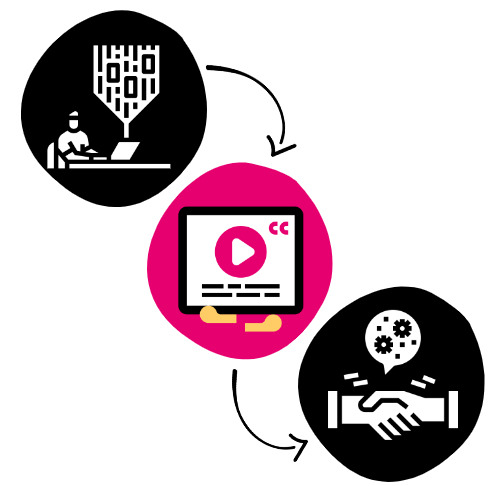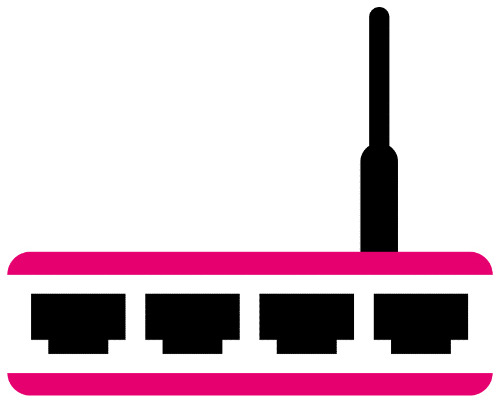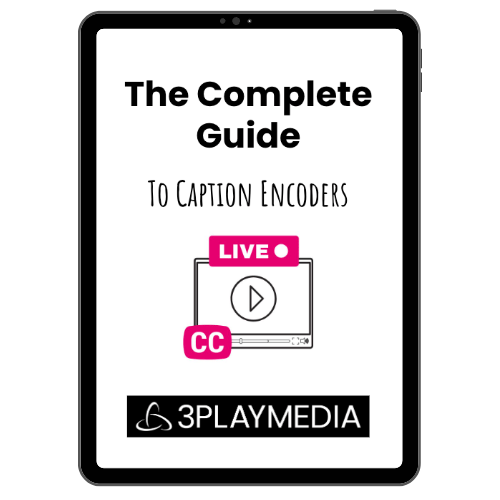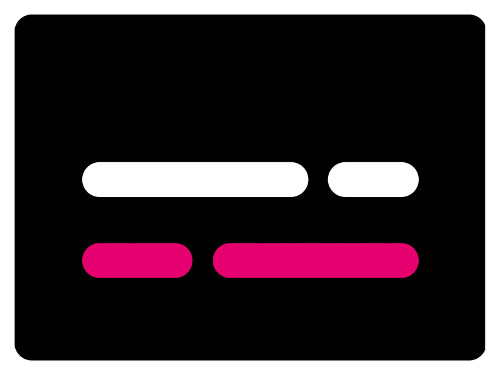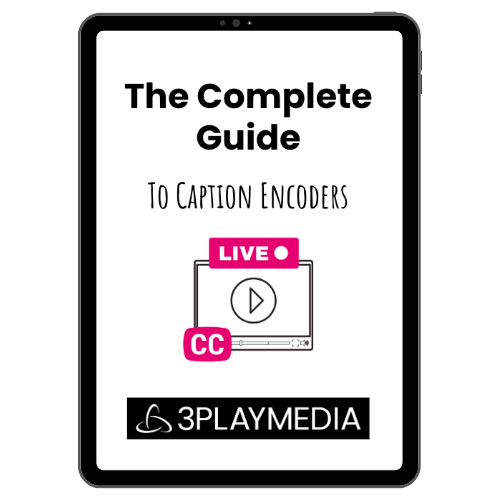Demystifying Caption Encoder Workflows
Updated: June 15, 2023
The Complete Guide to Caption Encoders [Free eBook]
With such a wide variety of caption encoder workflows available, determining whether to use a physical or virtual encoder can be a complicated process to navigate.
Perhaps you’re making a decision about your encoding method. Or maybe you’re simply trying to figure out whether you even need an encoder at all. Either way, it’s important to have all of the information before you begin, which is why we decided to demystify caption encoding and all of its associated workflows in this blog.
A general understanding of caption encoder workflows can help you best determine how and when encoding is necessary for your media. Read on to discover a high-level overview of caption encoding, a breakdown of specific live and recorded caption encoding workflows, and our detailed resources on each aspect of encoding.
Caption Encoding 101
Sometimes sidecar files, such as SRT or VTT, are not acceptable for a platform or television. In these cases, encoding may be necessary to transmit captions. Caption encoding is the process of embedding captions into a video stream.
A caption encoder itself is the piece of equipment or software that a television network or video platform uses to pair the captions with the video and audio stream. Encoders convert captions into data that can be decoded by individual televisions or video players.
A broad range of caption encoder workflows exist for both live and recorded captions. But first, let’s take a look at how caption encoding works in general.
Traditional Caption Encoding
Traditional caption encoder workflows involve the use of physical encoder equipment or software. In general terms, there are three types of encoder connections: telco (analog/modem), telnet (digital/IP), and iCap (only if the encoder is manufactured by EEG). The typical encoder workflow usually goes like so:
- A caption provider transmits a caption feed to the encoder(s).
- The encoder collects the caption feed for transmission to the viewer.
- The encoder pairs the captions to the video on a specific data transmission line known as line 21–this is the data that televisions are mandated to decode captions from.
There are two main standards for the encryption and decryption of closed captioning data via encoders. These standards were developed based on Federal Communications Commission (FCC) regulations: CEA-608 and CTA-708. Learn more about the differences between 608 and 708 captions and how they can impact captioning workflows.
Virtual Encoding
Virtual encoding options have expanded in recent years and are popular for web-based platforms or players. Virtual encoders function similarly to physical encoders without the physical box and connection. Virtual encoders are hosted in the cloud and require clients to connect their stream digitally.
Virtual encoders are useful for events that are streamed online, where the virtual encoder will add the captioning data and re-route the video stream to the desired platform.
Web-based platforms don’t usually follow the same data transmission methods as traditional broadcast television, so virtual and alternative encoding options are often used instead.
Live Caption Encoding Workflows
Live caption encoding allows broadcasters to simultaneously receive and encode captions, allowing them to be displayed alongside a television program or video in real time.
Live Caption Encoding Methods
The three main physical live caption encoding workflows involve the use of telco, telnet, or iCap encoders.
Telco Encoders
A telco encoder is based on analog technology and requires phone lines to connect to.
Telnet Encoders
A telnet encoder uses an IP and port number to receive the caption data. Similar to a telco encoder, a separate audio line is needed to hear the dialog that needs captioning.
iCap Encoders
iCap encoders are caption encoders manufactured by EEG. They include iCap software for improved functionality, such as sending audio to the captioner. They can also be set up as IP connections if desired.
Live Virtual Caption Encoding
In March 2023, 3Play Media introduced an exciting new live virtual caption encoding solution, which eliminates the need for additional live captioning hardware. 3Play’s virtual encoding solution delivers high-accuracy and low-latency captions to platforms, while streamlining live captioning workflows from listening through delivery. Learn more about 3Play’s exciting virtual encoder developments.
Looking for an audio described version of this video? We’ve got you covered!
Everything You Need to Know About Caption Encoders
This ebook serves as your comprehensive guide to caption encoders – what they are, when and why you need them, and which encoder to use.
Other Live Virtual Encoding Options & Alternatives
Aside from 3Play’s Live Virtual Caption Encoding solution, additional virtual encoding options, such as iCap Falcon (by EEG), are available for live captioning purposes.
A growing number of alternative options to encoding have arisen in recent years due to the evolution of broadcast, streaming, and other technological advances. For instance, captions are sometimes included as a separate entity on applications that have built caption functionality directly into their players, such as Zoom and YouTube.
Sidecar files and video player integrations remain popular options for many users due to their ease of use. Integrations in particular help take the guesswork out of whether a video requires encoding by simplifying captioning workflows. 3Play Media offers numerous integrations and partnerships with top video platforms such as Brightcove, Wistia, and YouTube.
Recorded Caption Encoding Workflows
In certain cases, it is necessary to embed recorded captions in the video itself rather than use a separate track. This is done using caption encoders.
Recorded caption encoding ensures that your closed captions will be viewable if you don’t have a video platform, if you want an offline option, or if you need captioned videos for kiosks and social media.
Closed & Open Caption Encoding
Closed captions are usually output on a separate track as a sidecar file and added to a player to be played in sync with the video. In this case, the captions can be turned on or off, usually by pressing the “CC” button on the video player.
Open captions, on the other hand, are encoded via video embedding. This encoding workflow permanently burns captions into the video, meaning that they are always showing and cannot be toggled off.
Open captions eliminate rendering inconsistencies across different video players and allow publishers to control the exact size and style of the captions. Open captions also make it easier to create DVDs and other physical media. Open captioned video files can be imported into any NLE or DVD authoring software.
Because open captions are part of a video itself, they are supported by all video players and devices. Discover more about recorded caption encoding workflows.
Subtitle Encoding
Subtitles, while closely related to captions, differ in their encoding processes.
Subtitles are often encoded as bitmap images, which tend to be a lot more compatible with newer digital media methods. HD disc media, like Blu-ray, does not support traditional closed captioning but is compatible with subtitles. The same goes for some streaming services and OTT platforms. SDH or other subtitling formats may be used on these platforms due to their inability to support traditional Line 21 broadcast closed captions.
The Complete Guide to Caption Encoders
To determine the encoding needs of your next video project, it’s crucial to ask some key questions to gain a full understanding of the numerous types of caption encoders and transmission methods available.
In 3Play Media’s The Complete Guide to Caption Encoders, we break it all down for you. This free eBook:
- Defines caption encoding
- Helps you determine whether you need an encoder
- Explains the different types of encoders and encoder alternatives
Encoders can seem daunting, but they’re an important part of making both live and recorded captions fully accessible to viewers. By learning the basics of caption encoder workflows, you can take the next step towards making your media accessible in the most efficient way possible.



